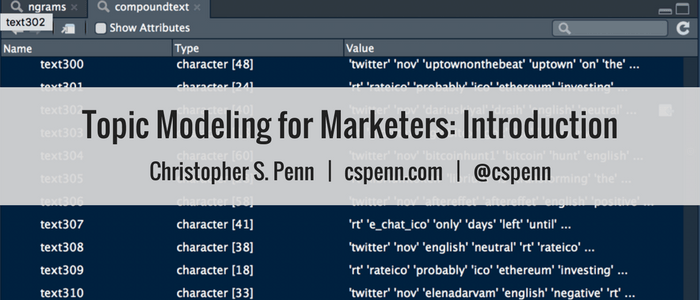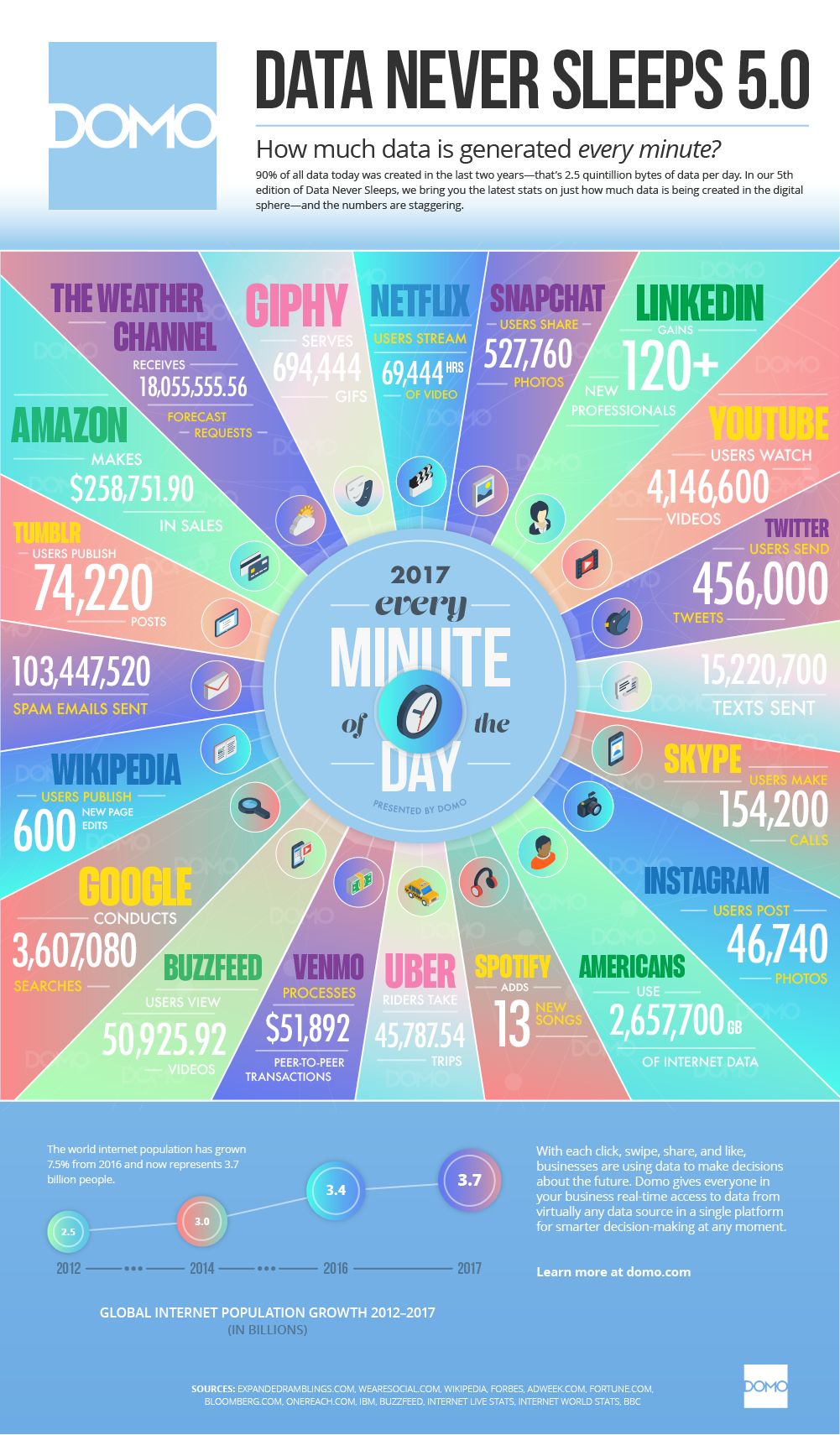
Human marketers fall farther behind every day.
In 2017, marketing analytics firm Domo released its fifth edition of Data Never Sleeps: The Internet Minute.

In Data Never Sleeps 5.0, they revealed the following statistics which occur every 60 seconds on the Internet:
- Twitter users send 456,000 tweets
- Instagram users post 46,740 photos
- Google users conduct 3,607,080 searches
- SMS users send 15,220,700 texts
Consider these statistics for a moment. This is what Mark W. Schaefer called Content Shock in 2014: massively overwhelming amounts of data. In my own analysis of just the news, nearly 200,000 news stories are published per day (according to the Google News database).
How long would it take to read 200,000 news stories? If every story were a mere 300 words, and every reader read at 150 words per minute, it would take 400,000 minutes to read a day’s worth of news.
Recall that there are only 525,600 minutes in a year. It would take nearly a year to read a day’s worth of news.
How long would it take to read 456,000 tweets? Assuming it takes us 5 seconds to read all 280 characters, it would take us 633 hours to read just 60 seconds’ worth of the world’s tweets.
We marketers are faced with overwhelming amounts of data and no practical way to read through it all, or even a significant fraction of it.
The Consequences of Content Shock
What happens when we simply can’t read it all?
For those of us analytically-minded marketers, missing content means missing data. We miss mentions of our brands, our companies, ourselves. Our analysis of what people are saying is incomplete; our insights are based on partial, potentially flawed data.
For those of us charged with creating content, we try to raise our voices. We make more content without necessarily making better content. Without complete or representative insights, we make content that’s tone-deaf or irrelevant to what our audiences want to hear about.
In both cases, we are positioned for failure. We will make irrelevant content and fail to understand what our audiences care about, what our customers want to buy, what our employees need.
Avoiding Failure
How do we avoid these twin failures of broken insights and broken outputs? The solution is straightforward: learn how to read all the relevant news. Learn how to digest all the relevant data, sort through it, and build our insights.
The reality is that we mere humans will never accomplish this unassisted. With the avalanche of data, we have no way to humanly read that much information unless we hired everyone creating content – all 3 billion of us.
Fortunately, we no longer must rely on ourselves. We now have extremely powerful tools at our disposal to read for us, digest, and build models of understanding with machine learning technology. This technology is known as topic modeling, and in this series, we’ll explore what topic modeling is, how it solves our content shock problem, and practical ways to apply it to our marketing.
Stay tuned!
You might also enjoy:
- You Ask, I Answer: Retrieval Augmented Generation vs Fine-Tuning?
- Fireside Chat: Geraldine Deruiter on Food, Feminism, and Fury
- Almost Timely News, Febuary 18, 2024: From Comment to Content
- Mind Readings: What Makes A Good Conference/Event?
- Almost Timely News, February 4, 2024: What AI Has Made Scarce
Want to read more like this from Christopher Penn? Get updates here:
 Take my Generative AI for Marketers course! |


Leave a Reply